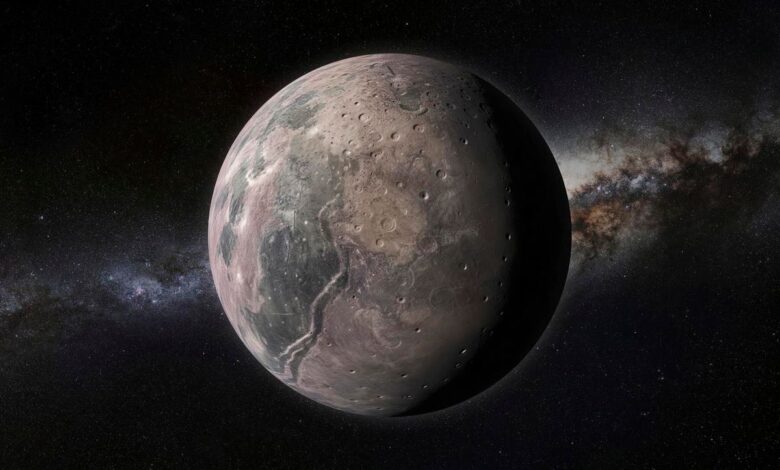Meet ‘Planet Y’ As New Evidence Suggests Secret World Beyond Neptune

📝 usncan Note: Meet ‘Planet Y’ As New Evidence Suggests Secret World Beyond Neptune
Disclaimer: This content has been prepared based on currently trending topics to increase your awareness.
There may be a warp in the Kuiper Belt, possibly caused by “Planet Y” — a Mercury-to-Earth-sized world that orbits the sun way beyond the orbit of Neptune.
getty
Is there a mysterious “Planet Y” orbiting the sun way beyond Neptune that’s warping the outer solar system? A new study has found that the Kuiper Belt — a vast donut-shaped ring of icy bodies beyond Neptune, including Pluto and other dwarf planets — is not aligned with the plane of the solar system. An unseen planet around the size of Mercury or Earth could be the culprit.
The Kuiper Belt’s Tilted Plane
The Kuiper Belt is home to dwarf planets like Pluto, Makemake and Haumea, and many other icy objects and so-called Kuiper Belt Objects. It’s Neptune’s presence on the inner edge of the Kuiper Belt that shepherds and sculpts the orbits of objects nearby, and prevents another large planet from forming in its vicinity. However, it can’t be responsible for this new tilt anomaly.
Neptune orbits the sun from, on average, 30 astronomical units (one AU is equivalent to the distance from Earth to the sun).
In this study, published in Monthly Notices of the Royal Astronomical Society, researchers measured objects between 80 and 400 AU and discovered that the mean orbital plane of distant Kuiper Belt objects is tilted by roughly 15 degrees relative to the orbital plane of the planets in the solar system. The finding, reported with 96–98% statistical confidence, suggests something more than random chance is at play.
“If it’s real, this kind of long-lived tilt can’t just be leftover from the past; something has to be holding it there,” said lead author Amir Siraj of Princeton University, via email. “The simplest explanation is that there’s an undiscovered planet, smaller than Earth but bigger than Mercury, whose gravity is nudging these distant orbits out of alignment.”
The Case For Planet Y
Simulations show that a world with a mass between Mercury and Earth, orbiting between 100 and 200 AU from the sun and tilted at least 10 degrees, could nudge the Kuiper Belt’s plane into a tilt. This hypothetical body has been informally dubbed Planet Y to distinguish it from the more widely known Planet 9 (or Planet X) hypothesis. Planet 9, if it exists, would be a far larger planet, several times Earth’s mass, orbiting at more than 300 AU.
Could Planet Y and Planet 9 Co-exist?
Planet Y and Planet 9 are not mutually exclusive, with each accounting for different anomalies in the solar system’s outer reaches. “Planet X (or Planet Nine) is thought to be a large planet, several times Earth’s mass, orbiting very far away — more than 300 times Earth’s distance from the sun — to explain why the orbits of some extreme objects cluster together,” said Siraj. “Planet Y, on the other hand, would be much closer in (100-200 times Earth’s distance) and much smaller … each would explain a different puzzle in the data, so in principle both could exist.”
Cue The Rubin Observatory
The upcoming Vera C. Rubin Observatory, set to conduct the Legacy Survey of Space and Time (LSST), will take the most detailed and complete survey of the night sky ever, and likely play a decisive role. With its wide and deep imaging of the sky, Rubin is expected to discover thousands of new trans-Neptunian objects in the Kuiper Belt, which may confirm the tilted plane or mark it as a statistical fluke.
“If Planet Y is in Rubin’s field of view and bright enough, Rubin could even spot it directly,” said Siraj. “But even if it doesn’t, the observatory’s data will quickly tell us whether the warp — and therefore the planet causing it — is real.”
If the warp is verified, it would mark the strongest evidence yet for a hidden world beyond Neptune — and a “new” addition to the solar system.
Wishing you clear skies and wide eyes.




